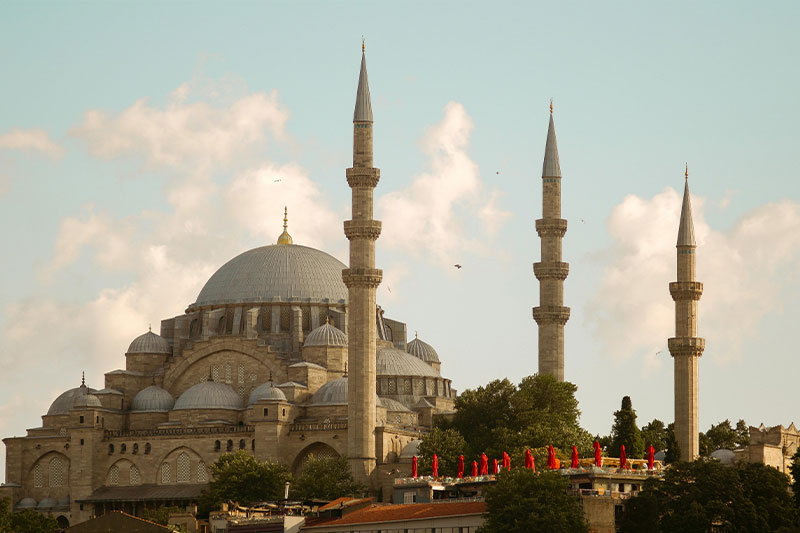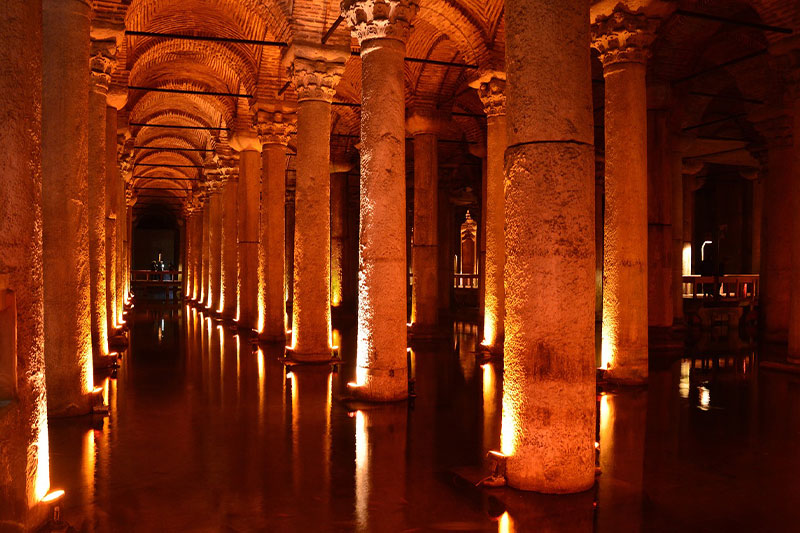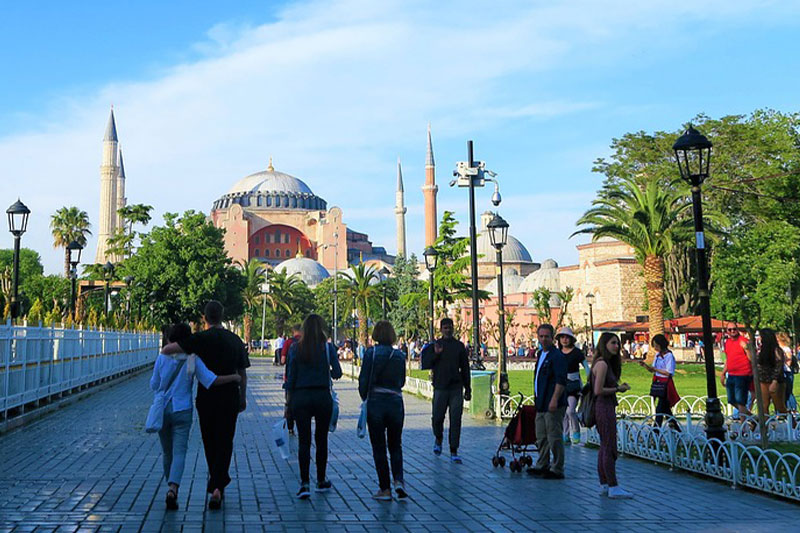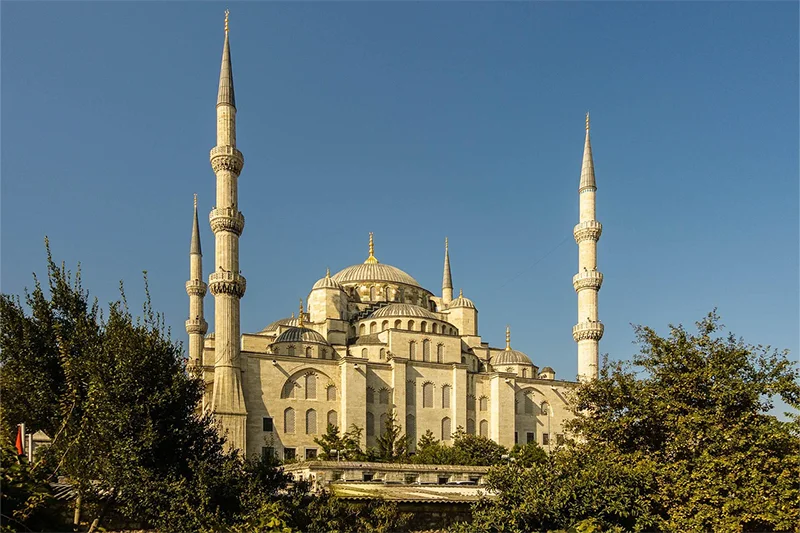Palaces in Istanbul: A Journey Through Ottoman Grandeur and Modern Elegance
Istanbul, the city where East meets West, is home to a stunning array of palaces that reflect centuries of imperial power, architectural mastery, and cultural fusion. From Ottoman-era sultans to early republican leaders, these palaces tell stories of political intrigue, artistic brilliance, and lavish lifestyles. Whether you’re a history enthusiast, an architecture lover, or a curious traveler, visiting the palaces in Istanbul offers a deep dive into the city’s royal past and vibrant present
Istanbul Palaces are among the most magnificent architectural treasures in Turkey. Istanbul, the city where East meets West, is home to a stunning array of palaces that reflect centuries of imperial power, architectural mastery, and cultural fusion. From Ottoman-era sultans to early republican leaders, these palaces tell stories of political intrigue, artistic brilliance, and lavish lifestyles. Whether you’re a history enthusiast, an architecture lover, or a curious traveler, visiting the Istanbul Palaces offers a deep dive into the city’s royal past and vibrant present
Quick Facts: Istanbul's Iconic Palaces
Suggested Placement:
Topkapi Palace:
Construction: 1460–1478 under Sultan Mehmed II.
Function: Served as the administrative center and residence of Ottoman sultans for nearly 400 years.
Current Use: Museum housing imperial treasures and Islamic relics
Dolmabahce Palace:
Construction: 1843–1856 during Sultan Abdulmejid I’s reign.
Architecture: Blend of Ottoman and European styles; features the world’s largest Bohemian crystal chandelier.
Significance: Symbolizes the Ottoman Empire’s modernization efforts.
Beylerbeyi Palace:
Era: 19th-century summer residence on the Asian shore of the Bosphorus.
Features: Neoclassical design with ornate interiors and serene gardens.
Chiragan Palace:
Original Use: 19th-century imperial palace.
Current Use: Luxury hotel; limited public access but notable for its riverside location and historical significance
Yildiz Palace:
Era: Late 19th-century complex under Sultan Abdulhamid II.
Components: Includes pavilions, gardens, and the Yıldız porcelain factory.
The Legacy of Ottoman Palaces in Istanbul
Istanbul served as the capital of the mighty Ottoman Empire for nearly five centuries. During this time, a series of opulent palaces were built to serve as royal residences, administrative centers, and symbols of imperial dominance. These palaces often combined Islamic, Byzantine, Persian, and European influences, creating unique architectural masterpieces.
A Symbol of Power and Prestige
Each palace was more than just a building — it was a carefully designed statement of power. They were often located near the Bosphorus for stunning views and strategic advantages, and featured courtyards, harem sections, imperial halls, and intricate gardens.
Top 5 Istanbul Palaces Every Tourist Should Visit
1. Topkapi Palace (Topkapı Sarayı)
The most iconic palace in Istanbul, Topkapi Palace was the primary residence of Ottoman sultans for over 400 years. It now serves as a museum showcasing Islamic relics, imperial treasures, and the mysterious Harem section, which reveals much about palace life.
🡪 Read the full page: Topkapi Palace – Complete Guide
2. Dolmabahce Palace (Dolmabahçe Sarayı)
Located on the shores of the Bosphorus, this 19th-century palace symbolizes the westernization of the Ottoman elite. Lavishly decorated with crystal chandeliers, gold ceilings, and European-style halls, Dolmabahce blends Ottoman and Baroque influences.
🡪 Read the full page: Complete Guide
3. Beylerbeyi Palace
A charming summer residence, Beylerbeyi Palace is situated on the Asian side of the Bosphorus. Its neoclassical design, serene setting, and well-preserved interiors make it a peaceful escape from the city’s hustle.
🡪 Read the full page: Complete Guide
4. Ciragan Palace (Çırağan Sarayı)
Now operating as a luxury hotel, Ciragan Palace once hosted royal events and housed sultans. While only limited areas are open to the public, it’s worth visiting for its riverside beauty and historic significance.
🡪 Read the full page: Complete Guide
5. Yildiz Palace (Yıldız Sarayı)
Less visited but historically important, Yildiz Palace was the seat of Sultan Abdulhamid II. The large complex includes pavilions, gardens, and the Yıldız porcelain factory.
🡪 Read the full page: Complete Guide
Hidden Gems: Istanbul’s Lesser-Known Palaces
While Topkapi, Dolmabahce, Beylerbeyi, Yildiz, and Ciragan are the most famous palaces in Istanbul, the city is also home to several lesser-known historical residences that reflect the grandeur of the Ottoman era. These elegant structures, often situated by the Bosphorus or hidden in the lush hills, provide a quieter but equally captivating experience. Here are some of them:
1- Ihlamur Pavilion
A charming 19th-century pavilion built by Sultan Abdulmejid I, nestled in a peaceful garden in the Besiktas district. It’s known for its ornate Baroque interiors.
2- Küçüksu Pavilion
Located on the Asian side near the Bosphorus, this summer residence features intricate stonework and a picturesque setting—often called the “mini-Dolmabahce”.
3- Maslak Pavilion
Set in a wooded area on the European side, this complex was used by Sultan Abdulhamid II for resting and hunting. It has a simpler design compared to other palaces but offers a glimpse into the private life of the sultans.
4- Adile Sultan Pavilion
Perched on a hill in Üsküdar with panoramic views of the Bosphorus, this mansion was a gift to Princess Adile Sultan. Today, it functions as a cultural center.
5- Hidiv Pavilion
A beautiful Art Nouveau residence built in 1907 for the Khedive of Egypt. Surrounded by gardens and forests, it’s now a cafe and event space, perfect for a scenic visit.
How to Visit the Istanbul Palaces
Opening Hours & Tickets of Istanbul Palaces
Most palaces are open between 9:00 a.m. and 6:00 p.m., with variations depending on the day and season. Topkapi and Dolmabahce often require separate tickets for their main halls and harem sections.
Topkapi Palace: Start around 60 €
Dolmabahce Palace: Around 50 €
Harem entries usually cost extra
We recommend booking your tickets online or museum card to avoid long queues, especially during tourist season.
Accessibility & Transport
Most palaces are easily accessible via public transport. Tram Line T1 takes you near Topkapi and Dolmabahce, while ferries and buses connect to others like Beylerbeyi and Yildiz. Taxis and guided tours are also available for convenience.
Visitor Tips for Palace Explorers
– Most palaces are closed one day a week—check schedules in advance.
– Arrive early to avoid long queues, especially at Topkapi and Dolmabahçe.
– Wear comfortable shoes as some palaces involve walking through large gardens or cobbled paths.
– Buy tickets online when possible to skip the lines.
– Don’t forget to explore palace gardens; they are often as impressive as the interiors.
– If visiting multiple palaces, consider Istanbul Museum Pass for discounts.
Insider Tips for a Great Experience
Use an audio guide or join a guided tour for a deeper historical context.
Visit early in the morning to avoid crowds and enjoy better lighting for photography.
Photography is allowed in many areas, but flash may be restricted.
Dress modestly in areas that include religious sections or historical mosques.
Bring water and sun protection if visiting in summer. Some palaces have open gardens with minimal shade.
Interesting Facts You May Not Know
Topkapi Palace houses the Spoonmaker’s Diamond, one of the largest cut diamonds in the world.
The chandeliers in Dolmabahce Palace weigh over 4 tons.
Ataturk, founder of the Turkish Republic, spent his final days in Dolmabahce Palace in 1938.
Yildiz Palace was protected by private guards and elaborate escape tunnels.
Some palaces, like Chiragan, have been partially rebuilt after fires in the 19th century
Map and Location Overview
All major palaces are marked on Google Maps, and most tourist apps include walking tours. Adding multiple palaces in a single-day plan is doable, but be sure to allow enough time at each site. Of course, this will be a tight schedule. If you are interested in photography and history, you will need a lot of time, especially for Topkapi Palace.
Explore Istanbul's Majestic Palaces
The heart of the Ottoman Empire, showcasing imperial collections and the famed Harem.
Dolmabahce Palace
A blend of Ottoman tradition and European elegance, featuring opulent interiors.

Beylerbeyi Palace
A serene summer residence with neoclassical architecture on the Asian shore.

Ciragan Palace
Once an imperial palace, now a luxury hotel with historical significance.

Yildiz Palace
A sprawling complex with gardens and pavilions, reflecting late Ottoman architecture.

Need Help with Your Trip?
Whether you’re visiting Hagia Sophia or exploring all of Istanbul, we can help. Get free advice or book a custom tour with a local expert
Frequently Asked Questions About Istanbul's Palaces– FAQ
What are the opening hours for Topkapi Palace?
Topkapi Palace is open from Wednesday to Monday, 9:00 AM to 6:00 PM. It’s closed on Tuesdays.
Is the Harem section included in the Topkapi Palace ticket?
No, the Harem requires a separate ticket. Combined tickets are available for both the main palace and the Harem.
Can I visit Dolmabahçe Palace without a guide?
Yes, but guided tours are recommended to fully appreciate the historical and architectural details.
Are there any palaces on the Asian side of Istanbul?
Yes, Beylerbeyi Palace is located on the Asian shore of the Bosphorus and is open to visitors.
Which palace is now a luxury hotel?
Çırağan Palace has been converted into a luxury hotel, offering limited public access but retaining its historical charm.



